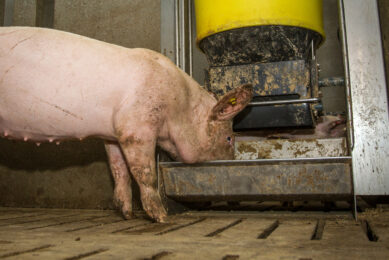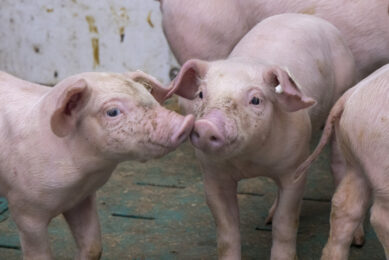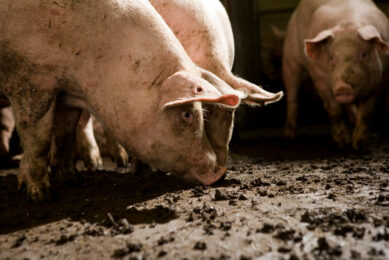Farm visit Ontario part 3: These are the weaner and finisher facilities
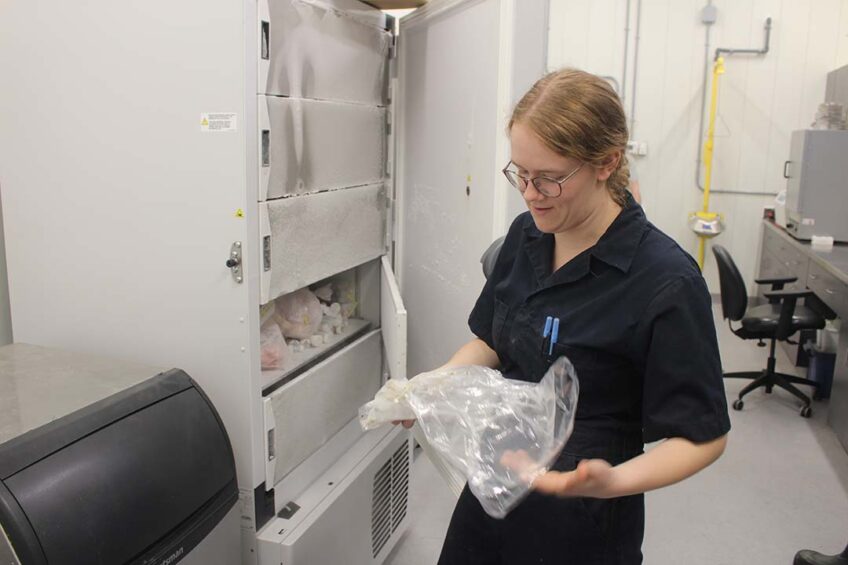
Free farrowing, intact boars and loads of nutrition research. In terms of set-up and research ideas, the new Ontario Swine Research Centre near Elora, ON, Canada leads the way in North America. In the previous parts, the OSRC was introduced and the sow facilities got attention. Now it is time for weaners, finishers and a quick look outside.
Biosecurity was top of mind when designing the system for feed delivery. A feed room is designed for distributing mixtures for weaners and finishers. Feed ingredients for trials are brought to the swine farm by truck from a pilot feed mill, whereas pigs on regular industry feed diets comes from commercial feed mills.
The bulk ingredients will be either deposited in 1 of 8 bins outside – or when the ingredients come in small batches, they are brought in in totes that enter through a disinfecting booth. There the contents will be fumigated with a broad-spectrum disinfectant, a process that takes all in all 10 minutes.
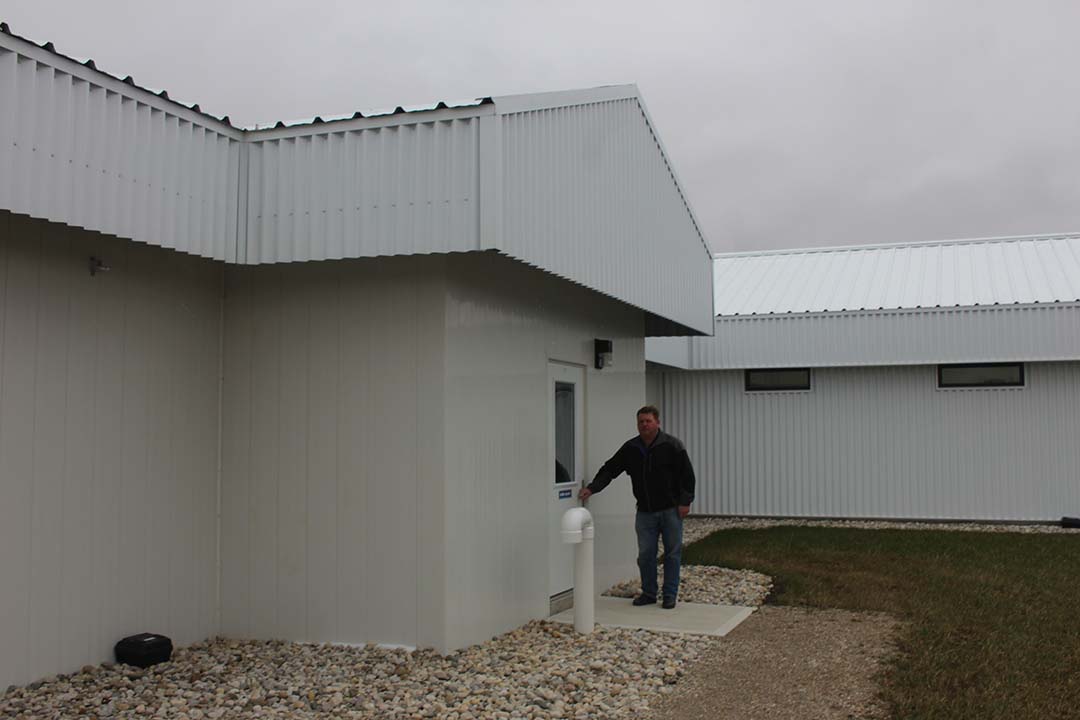
Minimising disease risk
By design, all deliveries and pickups including all feed, propane, livestock are on the same side of the farm in the prevailing winds – as the farm set-up has deliberately been designed that way to minimise disease risk. Hence, any feed truck will always only have to aim for one side of the building. This feed is delivered in different bins and follows a different route through the farm.)
Mixing and distributing
In the feed room, 7 different diets are being prepared for grow-finisher pigs. A transition feed is provided for the first few days just after weaning, then 4 starter feeds, a grower feed and a finisher diet can be prepared. Weda equipment ensures that this all gets mixed properly and distributed into the right channels.
Laboratory
The laboratory next door provides space to do simple tests, as well as to store medication. It comes with diverse equipment including a freezer that can keep materials at a temperature of -80°C. “This is mostly for keeping tissue that needs to be examined at a later stage,” explains researcher Vaness Kloostra. “At this temperature it does not deteriorate.” Normally more complex veterinary research will occur at the University of Guelph’s veterinary faculty.
Next door to the lab is a room where necropsies can be performed and where deadstock can be transported away using a track with an electric winch.
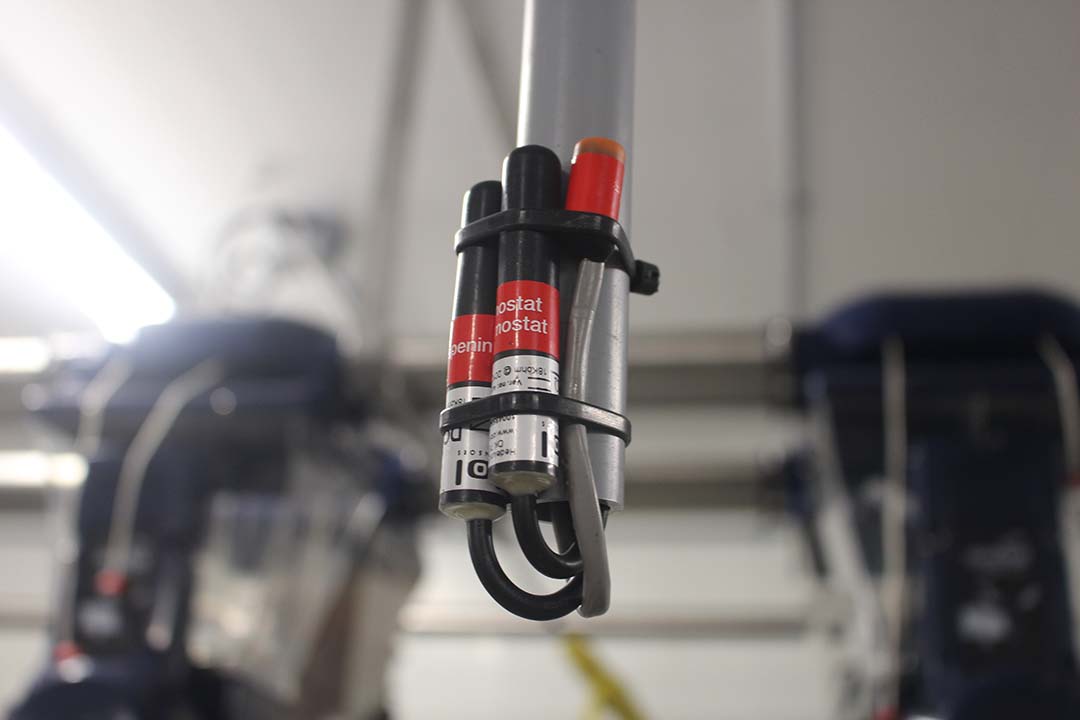
Weaner and finisher barn
Weaner pigs end up in one of the 6 nursery rooms. The nursery rooms have various different set-ups – there are those with a common design (24 pens), but there are also rooms with small pens for 5 pigs maximum – or equipped with 8 pens with each having a performance testing feed unit for measuring individual feed intake, provided by Hokofarm from the Netherlands.
As is indicated in the Canadian Code of Practice, the rooms are equipped with distraction material hanging from the walls, like chains or toys. The animals make good use of them.
Due to space constraints, only a part of the pigs will stay in the finisher rooms. After the weaner phase (at about 35-40 kg, at 10 weeks of age), a share of the pigs will continue their career elsewhere, as there is room nor need to finish all pigs on the research centre. They are then trucked to a nearby farm for further finishing. At the time of the visit there was an intriguing trial going on where a group of entire boars received black diets as those included charcoal, to see what the effects would be on the occurrence of boar taint.
Acclimatisation unit
The acclimatisation unit is a novelty for the university as this did not exist in the previous research centre. That was a closed herd that took care of its own breeding stock. In contrast, the acclimatisation unit allows the new facility to obtain fresh input from outside – a desire from everyone in the process.
The acclimatisation unit is a separate unit. It can be entered through from the rest of the farm through a security door – or from outside. In both cases, a separate showering-in procedure is required. That way the only way “normal” transfers occur is when gilts move into their new home after the quarantine.
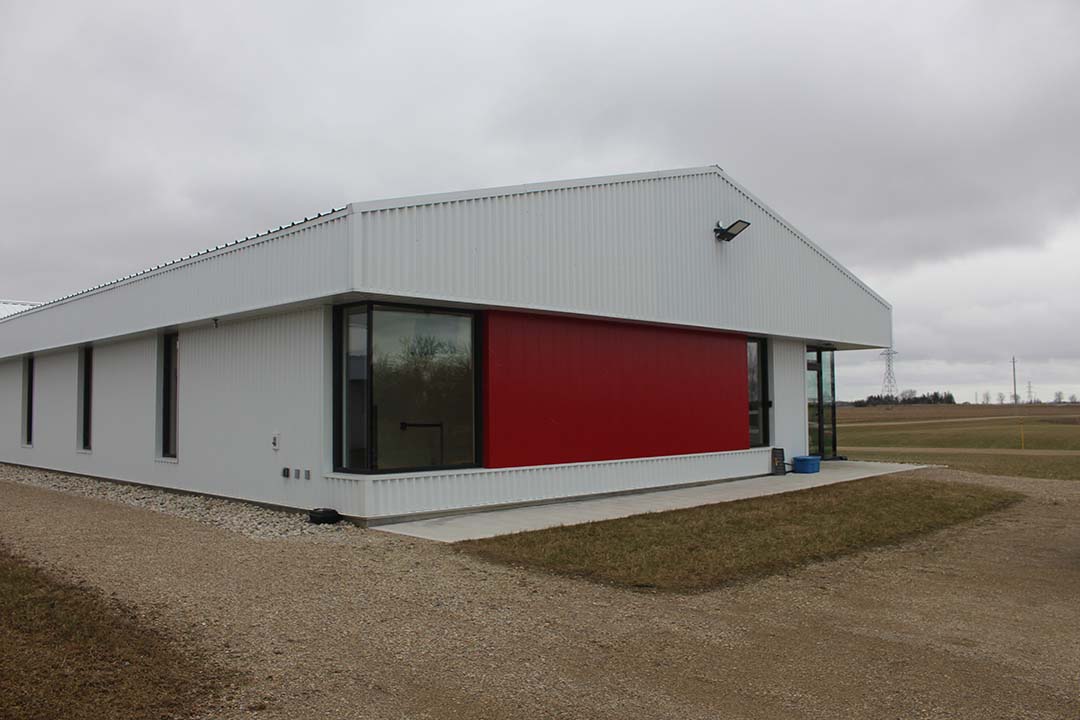
Outside
A quick walk around the complex clearly shows another pride and joy of the OSRC: viewing galleries. Those are little extensions where visitors can go in and then look through a window as to what is going on inside. This is ideal for visitors that would like to learn but lack the time for a proper showering-in procedure.
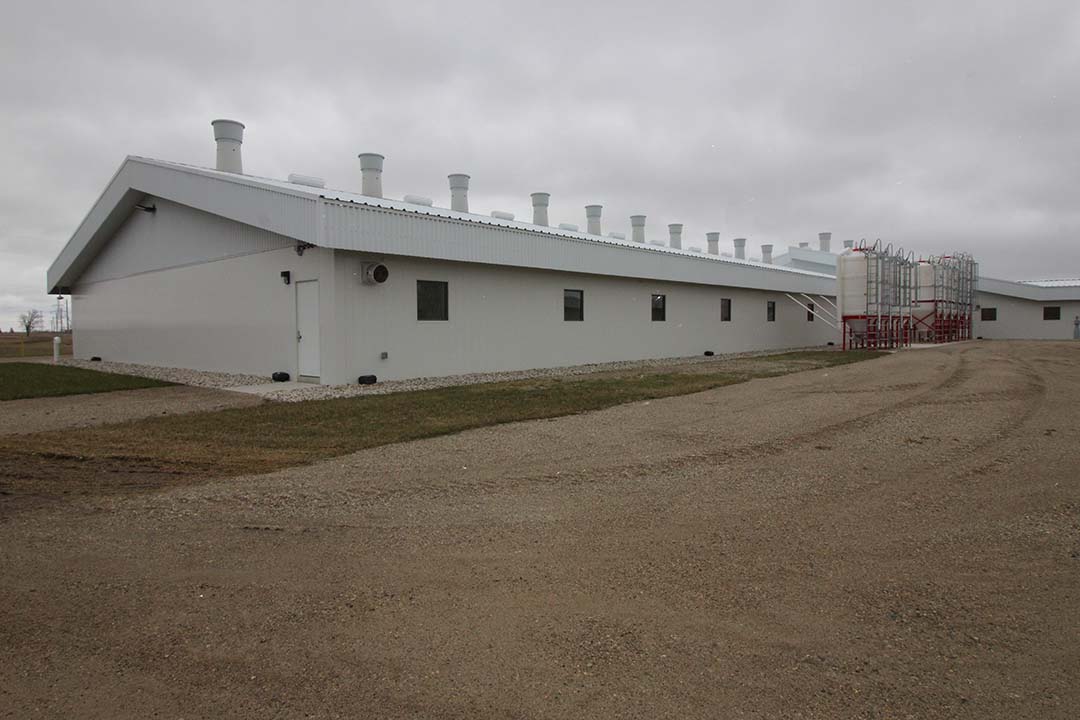
It is also clearly visible that this farm has “chimneys” for ventilation instead of tunnel ventilation – fairly unusual for pig farms in North America. As the exhaust goes into the atmosphere it is better regarding air re-entry and neighbouring farms, plus it offers better control in windy conditions. The efficient ventilation system installed by Danish company Skov also measures the volume that is exhausted.
From the outside, it is also very clear how any transport vehicle will only need to go to one side of the building. New pigs, sow feed or grow-finisher feed – any contact with the outside world is clustered on one side of the building.
Research infrastructure
All in all, the new research centre clearly reflects the attitude of Ontario’s pork producers to the world – with an open mind, collaborative attitude, willing to learn about novel developments.
As technical foreperson, Troy McElwain moved with the centre from the old site to the new, and he shares this passion to improve and learn. Even though the first few months were a steep learning curve in the beginning, he says, trying to get used to all the new materials and technology, whilst trials had to commence immediately. At the time of the visit though, the sows were already in parity 2 – and things were falling into its place. He is very clear: “One thing is for sure: I wouldn’t want to go back to the old facility.”



